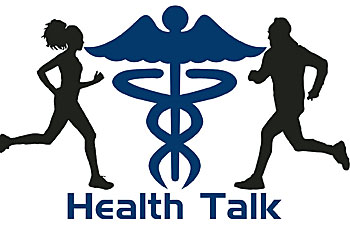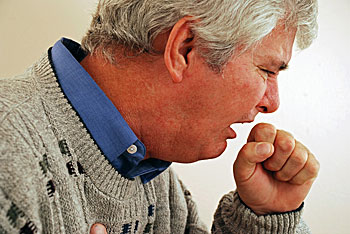By Ron Conte, Pharm.D.
 My last article addressed the use of local anesthetics, pain relievers/fever reducers, decongestants, and antihistamines to treat various symptoms of the common cold. Let’s now concentrate on treating a cough due to a cold.
My last article addressed the use of local anesthetics, pain relievers/fever reducers, decongestants, and antihistamines to treat various symptoms of the common cold. Let’s now concentrate on treating a cough due to a cold.
A cough due to an upper respiratory infection as in a common cold may linger longer than any other symptom. Coughing is the body’s response to rid the respiratory system of any material obstructing normal airway flow, including excess mucous. A cough can be productive (rid the airway of mucous) or non-productive (not able to rid the airway of mucous). As mentioned in my first article, home remedies such as the use of steam or a cold mist vaporizer can be somewhat effective in converting a non-productive cough into a productive one.
 Expectorants, or mucolytics, are the drugs that can help increase respiratory tract secretions. Guaifenesin is the most commonly used expectorant. It is usually in the form of a cough syrup or in tablet as Mucinex. Accompanied with increased water intake, expectorants can be very effective.
Expectorants, or mucolytics, are the drugs that can help increase respiratory tract secretions. Guaifenesin is the most commonly used expectorant. It is usually in the form of a cough syrup or in tablet as Mucinex. Accompanied with increased water intake, expectorants can be very effective.
Antitussives, on the other hand, are drugs that suppress the cough. Prescription cough medications containing hydrocodone or codeine, two narcotics, are used as cough suppressants. Products containing these agents are used to prevent a hacking cough during the day or at night to achieve better sleep. Side effects are numerous, but the most common is drowsiness. That is why narcotic antitussives are usually prescribed for use at bedtime. Narcotic containing cough products should be limited to adults only. More and more evidence suggests that the risk of narcotic use outweigh the benefit in children under twelve years of age.
 The most common non-prescription antitussive is dextromethorphan or the “DM” in many cough syrups. It is a suitable agent for mild to moderate (or hacking) coughs.
The most common non-prescription antitussive is dextromethorphan or the “DM” in many cough syrups. It is a suitable agent for mild to moderate (or hacking) coughs.
I never really understood as a pharmacist the need for an expectorant and antitussive in the same product. It’s like the yin and yang of cough therapy. I would rather recommend an expectorant for day use if treating a non-productive cough and an antitussive for bedtime use to allow for sleep whether the cough is productive or not.
 This leads to another concern: a cold remedy product with multiple active ingredients. For example, Tylenol Cold and Head Severe Congestion contains a pain reliever, an antitussive, a nasal decongestant, and expectorant. Do you truly need all these active ingredients to treat your cold?! Remember, not everyone has the same cold symptoms. In addition, each ingredient has a different duration of action as well as differing side effects. So, while the Tylenol product has taken care of your cough for several hours, you more than likely will still have nasal congestion. Moreover, the use of each active ingredient, whether you need them or not, may result in side effects causing some harm.
This leads to another concern: a cold remedy product with multiple active ingredients. For example, Tylenol Cold and Head Severe Congestion contains a pain reliever, an antitussive, a nasal decongestant, and expectorant. Do you truly need all these active ingredients to treat your cold?! Remember, not everyone has the same cold symptoms. In addition, each ingredient has a different duration of action as well as differing side effects. So, while the Tylenol product has taken care of your cough for several hours, you more than likely will still have nasal congestion. Moreover, the use of each active ingredient, whether you need them or not, may result in side effects causing some harm.
 I recommend you purchase only those active ingredients to treat your specific cold symptoms. Generic products are just as effective as brand names, and less costly! Cold remedies with multiple active ingredients may be helpful to treat some of your cold symptoms, but these products are very costly. Do check with your pharmacist as to which cold remedy is best suited to treat your symptoms.
I recommend you purchase only those active ingredients to treat your specific cold symptoms. Generic products are just as effective as brand names, and less costly! Cold remedies with multiple active ingredients may be helpful to treat some of your cold symptoms, but these products are very costly. Do check with your pharmacist as to which cold remedy is best suited to treat your symptoms.
I have not addressed drug dosages nor frequency of use. For that information, please read the label of the drug product and/or consult with your pharmacist. Lastly, some people feel that if one pill works well, then two would be twice as effective. Caution: that may be true for some drugs for some patients at specific times. But it is just as true that side effects from taking higher than recommended doses of drugs may increase exponentially all the time.

